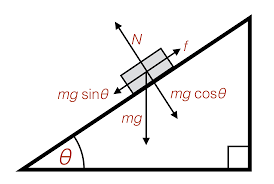The Jasper Experiment is responding to what I might call the “Block On An Incline” issue:

It is a classic Physics 12 lecture in which students develop an algorithm for analyzing the possible motion of a block that has been placed on sloped surface. The analysis is completely canned, and stripped of any context, but involves an impressive collage of math and reasoning skills. It is considered a traditional pinnacle of achievement to solve these problems in the study of dynamics. The group at Vanderbilt point out that skills or tools transmitted by a teacher in the absence of context or discussion are “inert knowledge” (CTGV, 1992a, p. 67). I completely agree. Their main idea is effectively:
CONSTRUCTIVIST + SOCIAL + COMPLEX PROBLEMS = DEEPER UNDERSTANDING
Authentic, complex problems, they argue, are key to use because the act of exploring the solution space of a problem (e.g. What is possible? Can I estimate values?) is a more relevant ability than memorizing algorithms. In a related study of complex problem solving, Vye et al. (1997) note that students of traditional classrooms are good at calculating things, but pretty weak problem solvers. Collaborative work, they find, has the potential to improve the quality of problem solving. Effectively, if the effort is focused and roles are understood, groups come up with much better solutions to problems than individuals.
Over a decade later, Park and Park (2012) worry that the complex and open form of problem and project based learning allows students to spend too much time on failed ideas. This lost time means fewer topics are covered and their toolkit of knowledge is garbage. Their fix is to structure the problem solving to cut out the failures, which is ultimately a return to algorithms disguised as real world problems. This recommendation doesn’t deal with the original Jasper issue that students have trouble identifying what sub-skills are required to solve a problem because of lack of exposure to these types of questions.
The contemporary videos in this question set (c.f. Khan Academy etc.) are not Jasper-type videos. Instead, they form a fantastic repository of guided practice for the many specific sub-skills that may pop up while teachers get on with helping students learn how to select the right tools for the job. I use them frequently.
Cognition and Technology Group at Vanderbilt (1992a). The Jasper experiment: An exploration of issues in learning and instructional design. Educational Technology, Research and Development, 40(1), 65-80. Vye, Nancy J.; Goldman, Susan R.; Voss, James F.; Hmelo, Cindy; Williams, Susan (1997). Complex mathematical problem solving by individuals and dyads. Cognition and Instruction, 15(4), 435-450. Park, K., & Park, S. (2012). Development of professional engineers' authentic contexts in blended learning environments. British Journal of Educational Technology, 43(1), E14-E18.
I appreciated your comments regarding the idea that too much time is being spent on failed ideas and not enough on covering math topics. This seems to be what a lot of related debate focuses on. As we learned earlier, conceptual change takes time but it is essential part of the learning process. Learning to carry out algorithms isn’t an end in itself but can serve as a tool within more authentic learning contexts.